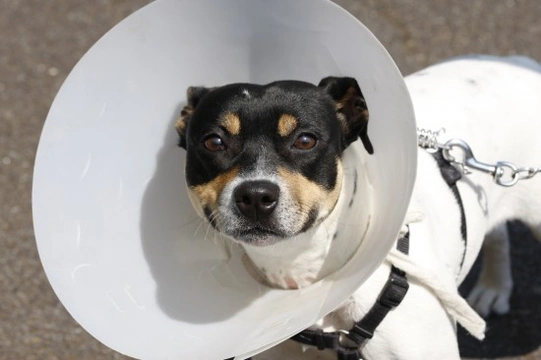
Post-surgical Complications in Spayed Dogs
Spaying a dog (or rather, a bitch) refers to the removal of their sexual organs to stop them from breeding, and also, to stop them going through regular heat cycles throughout their lives. In a spay operation, the ovaries themselves are removed, making it physically impossible for your bitch to conceive a litter, and also removing their desire to breed at all.
Spaying, along with neutering (for male dogs) is one of the most commonly performed procedures in veterinary practices, and almost every practice in the UK will perform several spay operations on cats and dogs every week. Because of this, every vet will perform literally thousands of spaying operations over the course of their working lives, and so it is fair to say that spaying is the most common and best understood abdominal surgery.
Due to the amount of experience that every vet has in performing spaying operations, very rarely does anything go wrong, and complications after a spaying operation are extremely rare, providing that the bitch is in good health and good aftercare protocols are followed at home. However, spaying is still a major surgery, for all that it is usually quick and clean, and as such, it should be treated with respect and with all the conscientiousness of any other large surgery.
As spayed bitches are almost always sent home the same day as they have their operation (and return to the practice for a check-up and stitch removal at a later date) it is up to the owner of the bitch to follow the vet’s advice in terms of aftercare for the spayed bitch. It is vital that you follow the vet’s advice on signs to look out for that might indicate that something is amiss.
Read on to learn about some of the most common complications that can occur post-spaying; however, please remember that “common” is a relative term, and very few spay operations are likely to have any post-surgical problems at all.
Loose stitches
When your take your bitch home, your vet will likely provide you with a buster collar or cone for your dog to wear, to keep them from bothering their wound. You should always ensure that your dog wears this for the recommended period, because as the incision heals, it may become itchy, prompting your dog to lick and scratch it.
Bothering the wound in this way can lead to the stitches becoming loose and not holding the wound closed properly, or some of the stitches coming out, or causing scarring. Keep your bitch away from her wound, and check the incision several times a day for the first few days to ensure that it is healing normally.
Infection
Post-surgical infections are always a risk, and something that you should be on the lookout for. Your bitch’s incision may appear a little red as it is healing, but it should not get progressively redder, feel hot to the touch, or be weeping pus. If you spot any of these potential signs of infection, call your vet immediately.
Abscesses
Occasionally, small abscesses or small seromas may form under the stitching of the wound, which will cause the stitches to become raised or look lumpy. These little lumps may be filled with a simple water based fluid solution, or, if bacteria has got into the wound, they may be pussy and infected.
If you spot any lumps, spots or bumps on or under your dog’s incision, or if you see any signs of pus or weeping, get your dog checked out by the vet.
Herniation
Hernias can occur when the internal stitches in the abdominal wall of your dog collapse, leading to fat and sometimes, organs such as the intestines becoming displaced and protruding either from the incision or under the incision. This can have serious consequences and needs prompt treatment, so if you can see anything protruding from the incision, or see a lump or large bumps forming beneath the skin, go back to your vet quickly for investigation.
Constipation
One of the most common but thankfully minor complications of the spaying operation is constipation after the operation, and it is not unusual for your bitch to not have a bowel movement for a day or so after the operation. You should keep an eye on your bitch when you take her out to the toilet, in order to find out when she has a bowel movement and keep track of things if she doesn’t.
In some cases, bitches may go for 3-5 days without having a bowel movement, but if after three days your dog still hasn’t passed faeces, speak to your vet about getting a stool softener to help her to pass impacted faeces more easily.
Also, if you notice that your bitch becomes incontinent or begins to have a small urine discharge after spaying, speak to your vet for advice.



